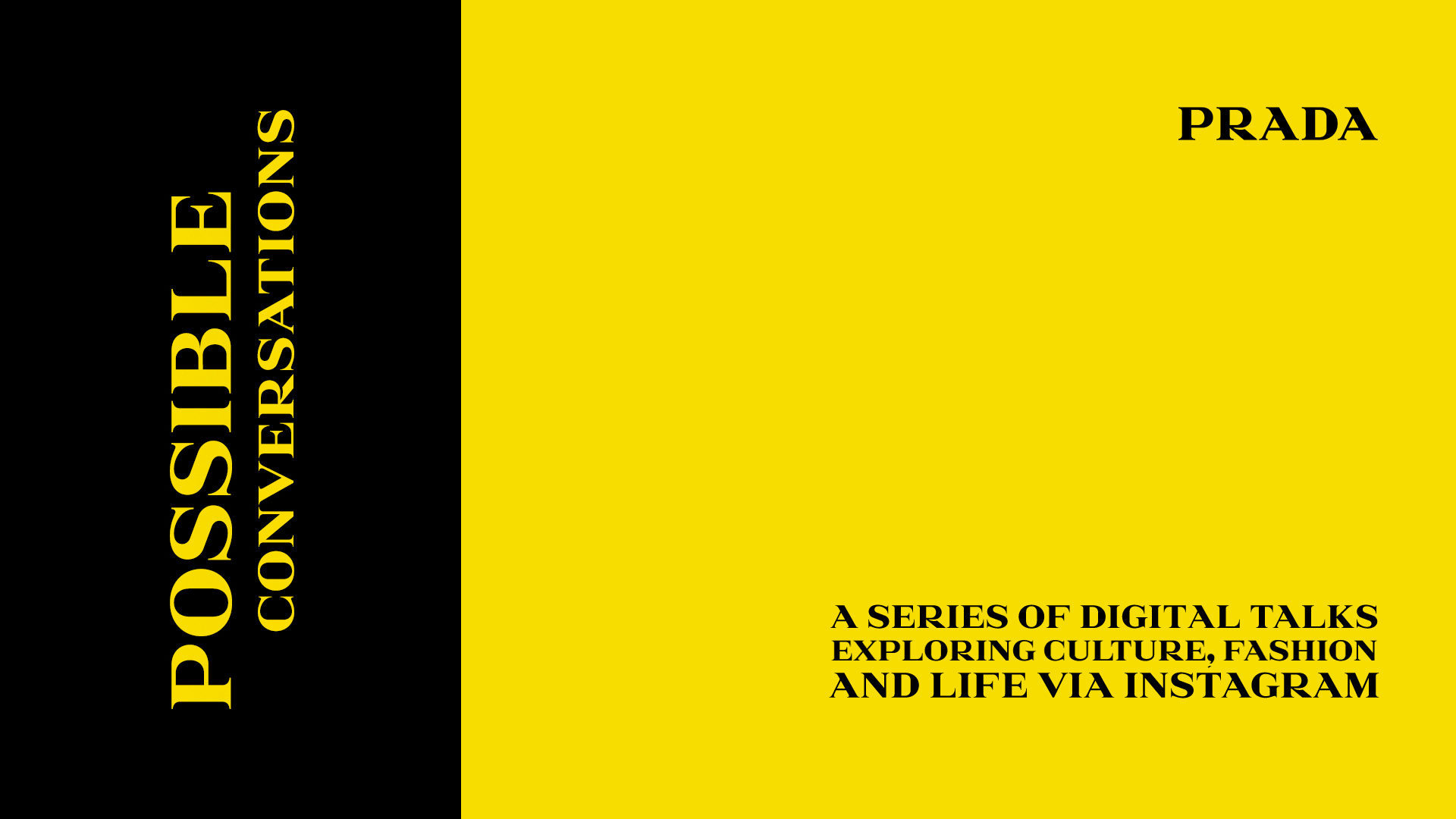Dialogue Should Not Be Limited: Prada Launches тPossible Conversationsт, A New Live Stream Project
April 17,2020

The Italian fashion brand Prada is kicking off a new Instagram live streaming project entitled тPossible Conversationsт, which consists of a series of live digital talks in which culture, fashion, art and life are explored by practitioners, experts, directors and creators from the fields of fashion, art, architecture, film and thought.The first talk entitled "Fashion in Times of Crises", with Pamela Golbin, the author, curator and artistic director of Jacquard x Google Arts & Culture Residency and Alexander Fury, fashion features director of AnOtherMagazine and menтs critic at theТ Financial Times, took place on April 14 at p.m. CET. The whole live stream lasted for about 30 minutes. Instagram users could submit questions and the speakers could choose the topics that users were most interested in discussing.
The topic of "Fashion in Times of Crises'' is highly relevant to everyone during this COVID-19 pandemic period. Since the common perception of COVID-19 is like war, Т corresponding questions emerged on how it will affect the fashion industry, and how the fashion industry will react. Pamela Golbin proposed that, at times like this, it is always valuable to look back at history to see how things have evolved and what innovations were made during times of crisis. In many ways, the current crisis is just like World War I, World War II, and the global financial crisis in 2008. According to Golbin, we will not only witness fashionтs resilience, but also its creative solutions. Fashion has a role to play, not only to inspire, but also to help people to overcome daily challenges. Many luxury brands have been seen to turn their factoriesт attention to producing masks, hand sanitizers, and other critical supplies in response to this virus.

COVID-19 will definitely accelerate change across different levels of society, with every single aspect of the fashion system also being impacted during this period, from design to production to distribution. Furthermore, fashion companies will need to rethink their priorities and focus more on sustainability and recycling, as well as considering how much fashion or how many seasons we truly need. These changes will emerge more clearly in the following months.
A Crisis, But Also An Opportunity
According to the British Fashion Council (BFC), 35% of new young and upcoming designers will not be able to continue their business past the summer due to COVID-19. The BFC Т also predicts that half of the entire industry could cease to exist by the end of 2020. However, if we look back at the 2008 financial crisis, when most people were advising against starting new businesses, many young talented designers such as Christopher Kane and JW Anderson were seen to emerge in London. Perhaps it is because of this kind of shift and breakdown of old ideas and old rules that young talent can grow.
Another example isТ World War II, when many American buyers were unable to go to Europe; instead, they had to showcase American designers for the first time. This was an incredible opportunity for American designers to finally be recognized. These circumstances are about seizing opportunities, about being proactive and innovative, and focusing on the creative input and outputs needed.
Digital Revolution During a Pandemic
One of the biggest effects of the COVID-19 outbreak on the fashion industry is that fashion shows cannot open normally. The public is curious about how fashion brands will showcase their products during this time.
Live streaming has already become a new way for fashion brands to showcase their new collections; for instance, luxury brand, Giorgio Armani, is live streaming its Fall 2020 MFW Fashion Show in an empty theater in Milan, in Shanghai Online Fashion Week, and LV and Nike are live streaming their new products on Little Red Book. Fashion brands are rapidly exploring new digital channels to adapt to the challenges posed by the COVID-19 pandemic.
Pamela Golbin points out that this way of holding fashion shows has already hit a tipping point that starts with a small group and rapidly becomes a spectacular event involving thousands of people (including buyers, media, influencers and celebrities). Crises help to accelerate widespread change and present businesses with a chance to reinvent themselves. This change will not only affect the fashion industry, but also film, cinema, museums and more.
Brands not only need to learn how to promote and market new products based on the use of modern digital tools, but also how to convey the brand's story, value and spirit to audiences.
| Editor: Margaret












Comments